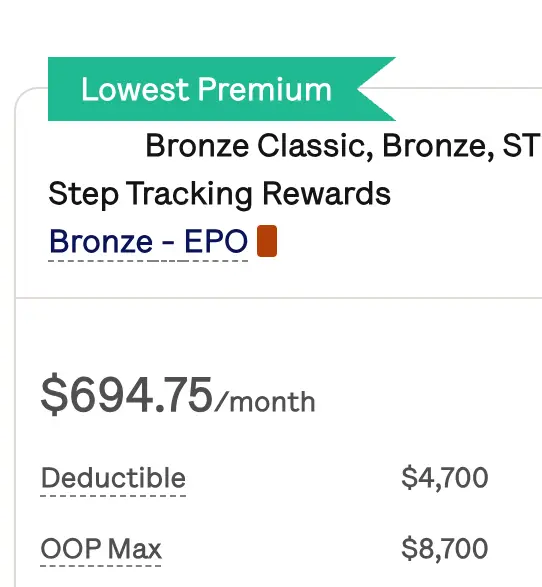6 Best Health Insurance Coverage for Individuals 55 & Older
6 Best Health Insurance Coverage for Individuals 55 & Older
There are several ways that you can get the health coverage you need if you are 55 and older. Some ways to get coverage are through employer health insurance, private health insurance, Medicaid, or Medicare. Alternatives to traditional health insurance might be your best bet to help you navigate affordable coverage.
Mira is an alternative to health insurance that offers access to low-cost urgent care, prescriptions, and lab tests for only $45/month. You do not need to meet a deductible with Mira and you can start using services as soon as you sign up.
Best Health Insurance Options for Individuals 55 and Older
There are many ways that you can get insurance if you are 55 and older. Below we outline and explain 6 common ways to get health coverage.
- Employer-Provided Health Insurance: Employer-provided health insurance is insurance that is purchased by the employer of a company and covers employees. In many cases, employees’ spouses can also be covered through employer-provided health insurance. Your boss will split the premiums with you and may offer several options for different types of health insurance plans.
- On-Exchange Private Health Insurance: On-exchange plans are sold through the Health Insurance Marketplace of each state. If you qualify for subsidies from the government, you can use them for on-exchange plans.
- Off-Exchange Private Health Insurance: Off-exchange plans are bought directly from a private insurance company or broker, rather than from the official state marketplace. There may be more options for off-exchange plans compared to on-exchange plans.
- Medicare: Medicare is a federal health insurance program for individuals who are over 65 and some younger people who have disabilities or health conditions, such as End-Stage Renal Disease. Medicare has different parts that cover hospital care, medical care, and prescription drugs. You might qualify if you’re not 65 if you qualify for disability.
- Medicaid: Medicaid is a program that helps provide health coverage to individuals who have limited income. Eligibility for Medicaid varies by state. In New York, a family of 5 must have an annual income of less than $22,620 in order to qualify.
- Non-Insurance or Gap Coverage: You can also receive low-cost health coverage through non-insurance options, such as Mira. For only $45/month, Mira members get access to low-cost urgent care, prescriptions, and lab tests. Mira may also be a great option for people who are freelancers or currently unemployed. You can pay month by month with Mira and start using services as soon as you sign up.
Types of Insurance Plans and Categories
If you get health insurance through your employer, the Health Insurance Marketplace, or a private insurance company, there are different types of plans that you can be covered by that come with different levels of quality. If you buy private insurance, you will also be able to select a metal category, often from bronze to platinum.
Types of Plans
There are several types of plans that differ based on the need for a referral, the ability to seek care at out-of-network providers, and payment methods. Below are some of the most common types of plans.
- Health Maintenance Organization (HMO): HMO plans limit coverage to doctors that are in-network. If you seek care from a doctor who is out of network, you will likely have to pay the full cost yourself. You may also need a referral from a primary care physician to see a specialist.
- Preferred Provider Organization (PPO): PPO plans allow you to see providers that are out-of-network, but you will likely pay less for care from in-network providers. You do not need to have a referral to see out-of-network providers.
- Point of Service (POS): POS plans have some elements of HMO and PPO plans. You must get a referral from a primary care provider in order to see a specialist. You can see in-network and out-of-network providers, but you will likely pay more to see out-of-network providers.
- Exclusive Provider Organization (EPO): EPO plans only cover services from in-network providers, so if you seek care at an out-of-network provider, you will likely be responsible for the full cost. EPO plans do not require referrals to see specialists.
- Indemnity Health Insurance: An indemnity plan, or fee-for-service plan, allows you to pick any doctor you would like to get care from. You have to pay for the services directly and then can file for reimbu

Get affordable doctor copay without paying insurance premiums
Join 39,000 people and get Mira, the best alternative to traditional insurance. Enroll and use immediately. Plans start at only $45/mo.
Jacqueline graduated from the University of Virginia in 2021 with a B.A. in Global Public Health and is a current M.D. candidate at the Icahn School of Medicine at Mount Sinai. Jacqueline has been working for Mira since April 2020 and is passionate about the intersection of public health and medical care.
